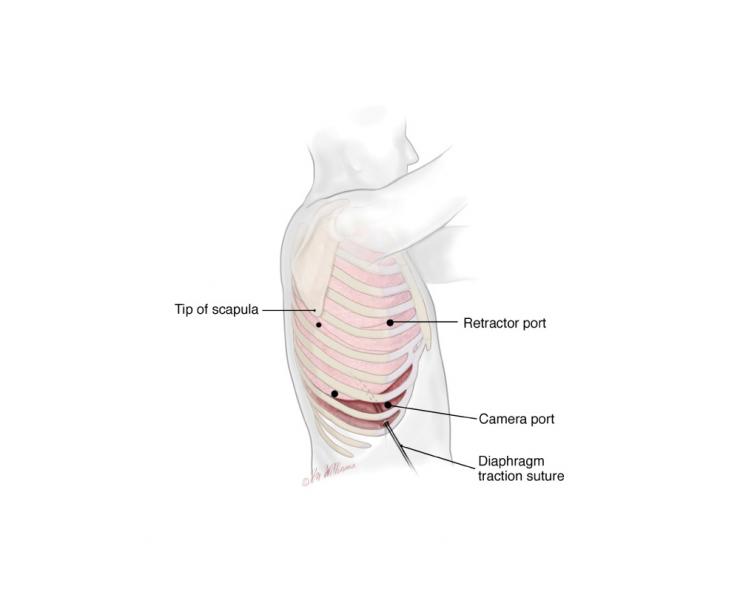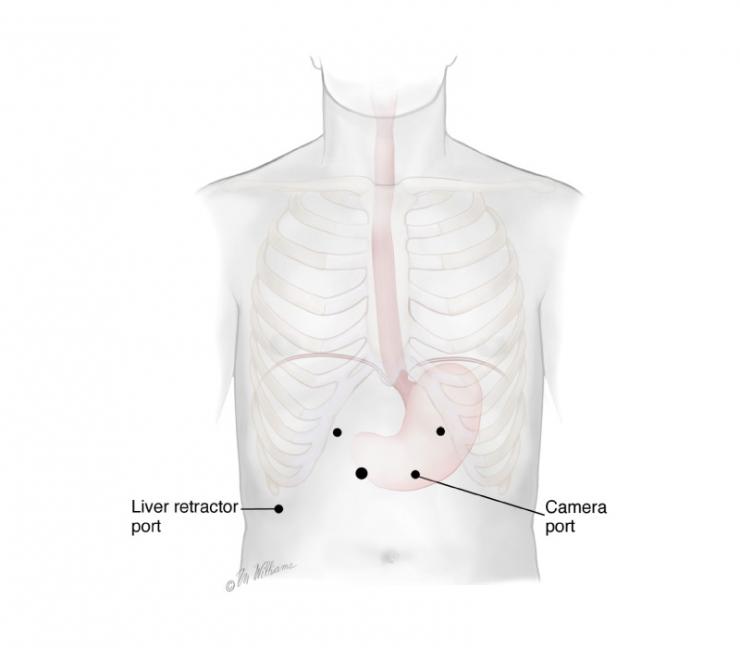Esophagectomy is an operation that involves removing the part of the esophagus that is associated with a tumor and a "margin" of normal esophagus. Usually, the esophagus is replaced by building a new one out of the stomach. Occasionally, the colon or the small intestine is used. Even if your cancer is only in the lower esophagus, we remove at least two-thirds of the esophagus because problems with reflux may occur, if less is removed.
Our thoracic surgeons at Baylor Medicine perform esophagectomies either through a traditional "open" approach or a minimally invasive approach. Surgeons can do a “three-hole” esophagectomy (also known as a modified McKeown). This entails surgery in the chest, abdomen and neck.
Alternatively, surgeons can do an Ivor Lewis esophagectomy. This is surgery in the abdomen and chest only. The particular operation the surgeon will perform depends on the characteristics of your tumor and the preference of the surgeon.
Regardless of whether an open or minimally invasive esophagectomy (abbreviated, MIE) is performed, the operation is the same on the inside; no shortcuts are taken during a minimally invasive esophagectomy. The difference is how the body is entered.
During an open esophagectomy, a single right-sided chest incision (which involves rib spreading) and a single abdominal incision, are made. In contrast, during a minimally invasive esophagectomy, a series of small incisions are made (most are less than an inch long) in the abdomen and chest. The largest incision is three to four inches long in the chest; however, there is no rib spreading.
Consequently, pain and recovery are usually improved in patients who undergo a minimally invasive esophagectomy.
Robot-Assisted Minimally Invasive Esophagectomy
Given the discomfort and complications associated with traditional surgery, surgeons have developed less invasive techniques to remove the esophagus. Robot-assisted minimally invasive esophagectomies utilize the da Vinci Surgical System, which provides the surgeon with a magnified, 3D high-definition visual system and tiny wristed instruments, which bend and rotate with much greater flexibility than the human hand. This enables the surgeon to operate with enhanced vision, precision and control as compared with standard minimally invasive techniques.








 Credit
Credit

